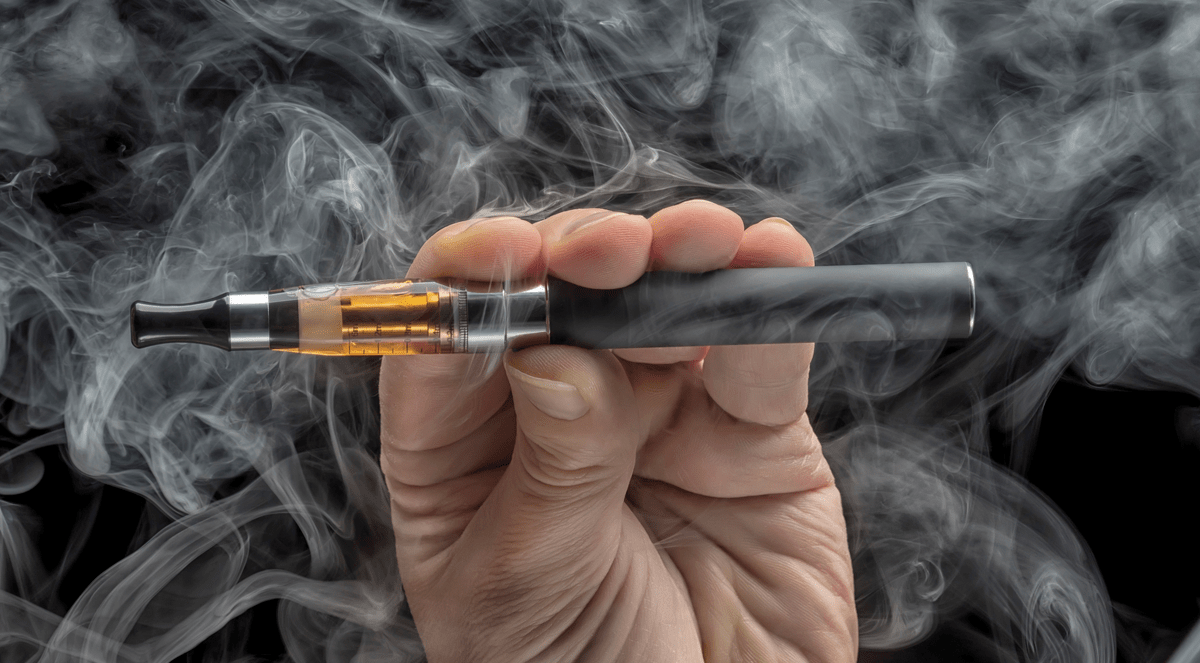Evidence suggests that electronic cigarette (e-cig) use has grown rapidly in recent years. “There seems to be a perception among the public—and perhaps even some physicians—that e-cigs are a benign substance because users are essentially inhaling water vapor,” says Peter V. Dicpinigaitis, MD. “However, few studies have assessed how e-cig use affects the respiratory tract or pulmonary function.”
Previous studies have shown that otherwise healthy smokers of tobacco cigarettes experience decreased cough reflex sensitivity when compared with non-smokers. Dr. Dicpinigaitis is one of few researchers worldwide with the ability to measure the effects of an external influence on cough reflex sensitivity in the laboratory using capsaicin, which has been shown in previous research to induce cough in a safe, dose-dependent, and reproducible manner. With this background, he and his colleagues sought to determine the effects of a single exposure to e-cig vapor on cough reflex sensitivity.
A Closer Look
For a study published in Chest, healthy adult lifetime nonsmokers visited a study site on 3 consecutive days. “Unlike previous research assessing cough reflex sensitivity in which chronic cigarette smokers were easy to recruit, there are few chronic e-cig users,” explains Dr. Dicpinigaitis.
On Day 1 of the study, participants underwent cough reflex sensitivity measurements in order to establish a baseline. On Day 2, they underwent an e-cig vaping session using the disposable e-cig Blu (Fontem US, Inc). “Blu is one of the most commonly used disposable e-cigs in the United States, and use of a disposable e-cig is easiest for a research study,” says Dr. Dicpinigaitis.
The vaping session consisted of 30 puffs on the e-cig 30 seconds apart. The authors noted that 30 puffs included approximately the same nicotine intake as a standard tobacco cigarette. Cough reflex sensitivity was then tested 15 minutes after the last puff using the capsaicin cough challenge. On Day 3, about 24 hours after the vaping session, participants underwent cough reflex sensitivity testing again in order to determine whether or not cough inhibition was transient.
Key Findings
“Most subjects were coughing from irritation they experienced while they were puffing the e-cigs,” says Dr. Dicpinigaitis. “This was likely due to the fact that participants were lifetime non-smokers and not used to puffing anything. However, when we waited 15 minutes and performed the capsaicin cough challenge test, we found a significant inhibition of cough reflex sensitivity when compared with baseline.”
The findings confirm what prior studies have shown with regard to tobacco cigarettes, according to Dr. Dicpinigaitis. “They beg the question of what would happen with repeated or chronic exposure as well as what is actually causing the suppression,” he says. “Unlike tobacco cigarettes, which burn tobacco leaves and involve inhaling numerous burned substances, e-cigs consist mostly of distilled water vapor and nicotine. It’s reasonable to conclude that nicotine is acting as the cough suppressant. However, the effect was transient. When participants’ cough reflex sensitivity was measured 24 hours after the vaping session, their levels had returned to baseline measurements.”
As a small sub-analysis within the study, subjects who had the largest inhibition of cough sensitivity with e-cig use returned to the study site to be exposed to a non-nicotine-containing e-cig. These participants were informed that the e-cig was a different brand but were not told that the e-cig contained no nicotine. “When we tested the effect of the non-nicotine-containing e-cig on cough reflex sensitivity, we found no such effect as we did with the Blu e-cig,” says Dr. Dicpinigaitis (Figure). “This implies that nicotine is in fact the substance that was responsible for our observations on Day 2 of the study.”
Changing Perceptions
The study is one of several recent investigations suggesting that e-cig vapor is not a physiologically benign or inert substance, as just one exposure led to measurable cough sensitivity suppression, according to Dr. Dicpinigaitis. “We can no longer think of e-cigs as benign substances,” he says. “This information needs to be passed onto our patients. With the increasingly common use of e-cigs and relatively little information on their safety, patients have been asking their physicians for advice on whether they should use these products. Unfortunately, physicians have little help from data in the medical literature to refer to when asked to provide this advice. With our study and other recent analyses, physicians now have data that they can reference showing that vaping, in many cases, has a negative effect on the health of people who use e-cigs.”



 PWeekly
PWeekly